- Make It Yourself Lavender Heart-Shaped Bath Bombs!
- 20 Things You Never Knew About “Down There”
- 12 Best Foods For Those Suffering From Arthritis Pain
- 12 Personal Hygiene Mistakes Almost Everyone Makes (Mom Never Told You About #4!)
- 15 Medicinal Plants And Herbs From The Cherokee People
- 12 Mind-Blowing Benefits Of Drinking Coconut Water During Pregnancy
- 12 Outstanding Winter Foods That Won’t Fatten You Up Like A Christmas Turkey
Grow Your Own Beauty Product Garden
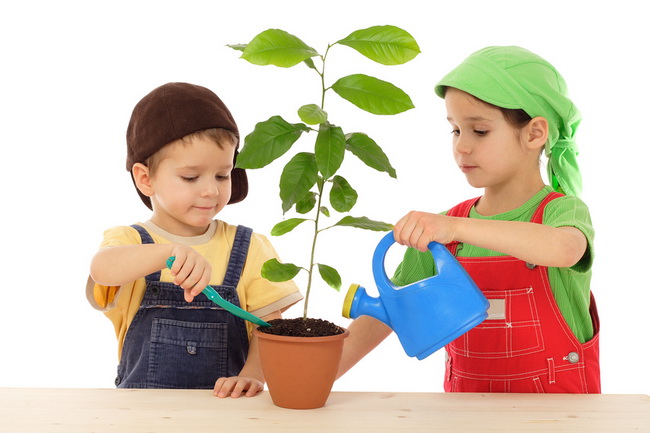
Photo credit: bigstock.com
In case you haven’t heard, many of the beauty products and personal care products we use daily contain many unhealthy, even toxic ingredients. Although some of these commercially made products state that they are organic, they aren’t really what you think. All a company needs to do is to add one natural item, for example, calendula flowers, to their product, and they can label it as “natural” or “organic” even if the other 99 percent of the product contains petroleum based chemicals.
Although many commercially made beauty or personal care products will boast that they contain botanical extracts such as aloe vera or lavender, the package will rarely tell you where these botanicals came from, how they were processed, or whether or not they were organic. This is important information that many consumers want to know but almost never find. No one wants to use lavender that was sprayed with dangerous pesticides or aloe vera gel that was so highly processed that it no longer contains any of the healthy ingredients you are buying the product for in the first place!
Most of the truly organic and/or natural products contain parts from everyday plants that you can easily grow yourself at home. If you have ever looked at a bottle of organic rose scented glycerin, or rosehip oil and nearly fainted at the price, you will be really happy to know that you can make the exact same thing with plants from your own garden. You don’t need much land, and in fact, many of them can be grown in containers on your patio, if you are cramped for space.
Yep, you can grow your own roses, green tea, chamomile, calendula, and horsetail in your own home. It’s hard to know which the best part about this is: the inexpensive ingredients, knowing that your ingredients are truly organic, or knowing that you made it yourself.
You don’t have to be Farmer John or Susie Farmer to grow most of these, either, as many of these plants grow wild with nothing more than sun and rain and no special care at all. In fact, there are so many plants to choose from that, unless you live on some considerable acreage, your most difficult task will be choosing which plants you should use!
Perhaps it would be best to look at the personal care or beauty products you have in your home right now and find out what plants you would need to replace them. For example, if you have teenage children, you might want some plants that will fight acne. If you have very dry skin, you will want plants that are super nourishing to dry skin. If you aren’t sure which plants are good for these types of purposes, a simple trip to your local drug store or health food store will help you out. Look at products that state they are perfect, for example, for dry skin. Then note what botanical extracts they contain, such as aloe vera, and write them down. This way you will make a list of the plants you will be able to use in your own beauty products.
We couldn’t possibly list every botanical extract and their use here, but we will list some of the most common ones; ones that you generally find listed in those “natural” beauty products.
Continue to Page 2

Photo credit: bigstock.com
Are you ready to get started? Let’s go!
Common Botanicals and Their Uses
Botanicals with Anti-Inflammatory Compounds
- Parsley – This one can work both inside and outside the body. Eating parsley will stop inflammation and free radicals, which cause premature aging.
- German Chamomile – This is a super gentle herb that eases the pain and itching from eczema and is perfect for all skin types. It is super soothing to dry skin and the tea is a mild sedative. You can use this in either oil or water based infusions, such as massage oils, creams, toners, or lotions.
- Arnica – You have most likely seen plenty of creams and lotions that contain arnica, and they tend to be a bit pricey. Arnica is indigenous to the Northern part of the US, so you should be able to grow it everywhere except the hottest regions of the country. Arnica is known for stopping the cells that trigger inflammation.
- Cucumber – This is another one you can easily grow yourself. You can have fresh cucumbers for your salads, pickles for sandwiches, and plenty left over for your beauty products. Fresh cucumbers work to relive redness, puffiness and temporarily tighten the skin. You can use water infused cucumbers in lotions, and creams, even puree the flesh to make facial masks. Placing cucumber slices on the eyes is a well-known remedy for relieving puffy eyes and reducing those dark under eye circles.
- Chickweed – Many people think of chickweed as exactly that, a weed! But this common garden “pest” can be used in water or oil based infusions, and then made into creams, lotions, and salves. Chickweed is great for reducing redness and soothes itchy skin. Oh, and you can add chickweed in your salads as well!
Continue to Page 3
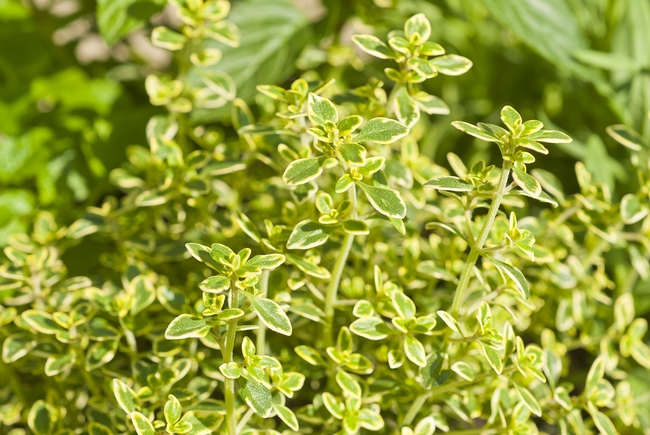
Photo credit: bigstock.com
Botanicals for Acne
- Burdock Root – Although many of the herbs on this list are meant for topical use, this is one herb that you should consume. Burdock root is generally consumed as a tea. The root of this plant has super cleansing powers that work from the inside out to remove toxins and heal boils, eczema, and acne. Drinking one to two cups of this tea each day will lead to super clear, radiant skin within about 4 weeks!
- Thyme – This is a very common herb used in cooking, but studies show that this simple herb works better at clearing up acne than many over the counter remedies, at a fraction of the price! If you have been using any product that contain benzoyl peroxide, try thyme instead! You can make an alcohol based infusion, such as they did for this study, or try adding thyme to Witch Hazel for a less drying but still super effective acne remedy.
- Lavender – Who doesn’t want some of this sweet smelling herb in their garden? Lavender is loaded with antiseptic and anti-inflammatory compounds that make it super for any type of skin problem. Lavender oil will quickly heal cuts, burns, or other types of skin wounds. You can use the flowers and leaves fresh, or dried, to make infusion filled creams, lotions, or facial toners that will kill off the bacteria that causes acne.
Continue to Page 3

Photo credit: bigstock.com
Botanicals for Healing
- Aloe Vera – This popular houseplant can also be successfully grown outdoors in large pots or even in a semi-sunny spot in the garden. The gel inside the leaves of this succulent are perfect for repairing sun damaged skin or for those common kitchen burns. Aloe vera is also perfect for using as an oil-free moisturizer for those with oily skin. You can use this one all by itself, or add some to your lotions, shampoos, and hair conditioners.
- Comfrey – Even the name sounds comforting, doesn’t it? The leaves from this plant can be made into an oil infusion for treating psoriasis, eczema, and a soothing skin lotion. Both the leaves and flowers of this plant have super anti-inflammatory compounds, so it can be used in many different types of products. Some people find comfrey a bit of a pest, as it seeds itself all over and can take over a garden if not kept in check. There is a sterile type called Bocking 14 that you can buy if you don’t want to be overwhelmed with seeds and find yourself pulling it out of your garden all summer long.
- Calendula – You will find this herb listed in many healing lotions. The flowers are used to heal acne, sunburn, eczema, and other types of skin problems caused by inflammation. You can use this in either an oil or water based infusion or a tincture.
- Echinacea – You thought this was only for immune support didn’t you? Don’t feel bad, most people believe this. However, Echinacea can super speed up the regeneration of skin, treat acne, and reduce inflammation. It’s a super beautiful flower that anyone would be proud to have in their garden. You can always dry the flowers and leaves for a tincture you can make for the winter months and fight off cold and flu viruses.
Continue to Page 4
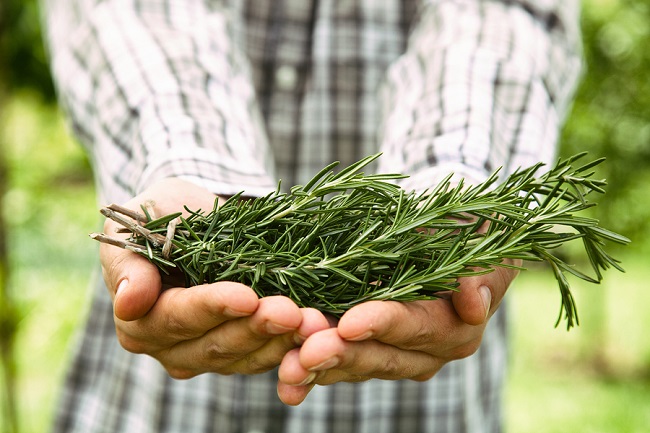
Photo credit: bigstock.com
Botanicals For Skin Toning and Astringent Compounds
- Witch Hazel – One of the most beautiful flowering plants ever! Almost all commercially made facial toners use Witch Hazel because it has high levels of astringent tannins, which remove oil from the skin naturally as well as temporarily tighten the skin. You can make your own natural infusion with the leaves and make a super facial toner for pennies!
- Rosemary – This is another beautifully flowering bush that will smell great every time you pass by! It also has small beautiful blue flowers. You can use the leaves, fresh or dried, in cooking and an infusion of the leaves will increase healing by stimulating the blood flow to the skin. You can use this in so many ways: as a hair rinse as well as in balms, lotions, and oils.
- Yarrow – This is another common “weed” that you should make a special place for in your garden. This is a wild plant that has been used for ages to treat skin wounds. You can make a toner to remove oil and improve the skin tone with an infusion of both the flowers and leaves.
- Lemon Balm – So much more than just a calming, night time tea! Lemon balm is type of minty lemon plant that can make a terrific toner for oily skin. You can also make a toner from the leaves for your own healing creams and lotions.
Continue to Page 5
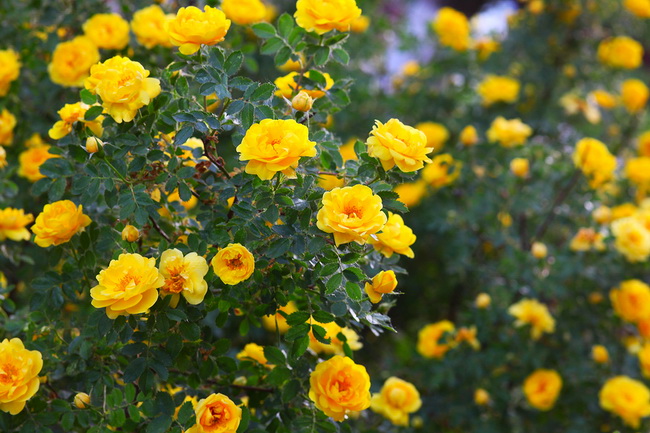
Photo credit: bigstock.com
Botanicals for Aging Skin
- Lady’s Mantle – You will find this in many wrinkle fighting creams as this herb helps to tone and tighten the skin as well as reduce the size of pores. You can make an infusion using the leaves for a natural skin toner, cream, or lotion.
- Helichrysum – This flowering plant is a natural anti-inflammatory that will help reduce skin redness and encourage skin regeneration. Making an infusion from the flowers of this plant will help diminish the appearance of fine lines and wrinkles.
- Green Tea – Yep, the same stuff you are planning on drinking this afternoon. Green tea is easy to grow and can be used to treat both acne and mature skin. Green tea encourages the regeneration of skin that has been damaged by sun, environmental factors, and slows aging. The great thing about growing your own green tea is that you can grow you own tea leaves for drinking, and then make an infusion of leaves to use as a toner or in a cream or lotion.
SEE ALSO: Top 12 Foods that Fight Wrinkles and Premature Aging
- Roses – You might already have some roses in your yard somewhere! Rose water is a very mild astringent and skin toner that is perfect for mature skin. It encourages the skin to regenerate itself while removing impurities from the skin. It also improves moisture levels. You can make your own organic rose water by using an infusion method from the petals of your rose flowers.
Continue to Page 6
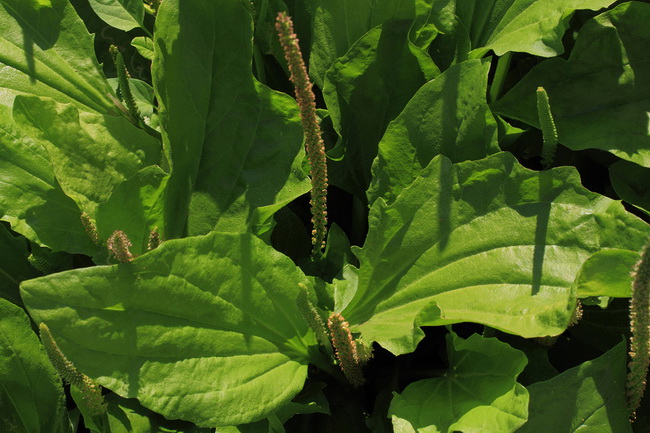
Photo credit: bigstock.com
Botanicals for Moisturizing the Skin
- Marsh Mallow – This plant is often found wild, and you can grow it easily in your garden, especially on a sunny back wall. It can be super tall, (sometimes 7 feet) so plant it somewhere where it won’t block your view, but this is perfect for walls, fences, or against outbuildings such as barns or garden sheds. You can use the entire plant, flowers, leaves, and roots, to moisturize and soften the skin without any additional oils. You can make an infusion that will give your lotions a silky texture you will adore.
- Violet – Beautiful and fragrant flowers, violet leaves and the flowers are super moisturizing. This is the perfect flower for those with really dry skin. Infuse fresh flowers and leaves in either oil or water for skin toners, creams, and balms that can heal and regenerate skin cells, too.
- Plantain – This is a “weed” that grows everywhere, including abandoned lots, driveways, and sidewalk cracks. This little known “weed” can be eaten, much like spinach, as well as making oil or water based infusions that you can use in creams and lotions. Plantain is very effective at both moisturizing the skin and encouraging healing.
Continue to Page 7

Photo credit: bigstock.com
Botanicals for Lightening Skin or Darkening Hair
- Sage – You can use this common garden herb as a natural astringent to remove excess oil from the skin, but it also works as a hair rinse to help keep dark colored hair dark! Although it won’t work like hair dye, your hair will absorb some of the color from the plant and help to gradually darken the hair. You can make an infusion with coffee, nettles, and rosemary for a naturally darkening hair rinse.
- German Chamomile – This is another herb that is commonly used for both skin and hair. Chamomile will naturally lighten the skin and hair, especially when lemon juice is added to the infusion. You can lighten your brown or blonde hair as well as help to lighten and brighten your skin tone.
- Elder Flower – The flowers from Elder trees, which bloom in May and June, can be used to make an infusion to help fade dark spots, freckles, age spots, even scars. If you collect a huge amount of flowers, you can also make elder flower wine as an extra treat!
Now that you have made your choices, you can start sowing your seeds or seedlings so you will be able to harvest later this summer! Check out our following article “How to Make Infusions for Beauty Products From Your Garden Plants” so you will be prepared and ready to make your own beauty products once your garden matures. Happy gardening!
References:
































